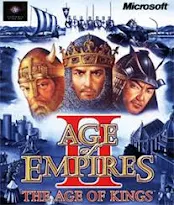What’s New? Key Differences from the Original
Expanded Timeframe:
While the original Age of Empires spanned from the Stone Age to the Iron Age, Age of Empires II focused on the medieval period. Players could guide their civilization from the Dark Ages through the Feudal Age, Castle Age, and finally to the Imperial Age.More Civilizations:
Age of Kings introduced 13 unique civilizations, such as the Britons, Franks, Mongols, and Saracens. Each had distinct bonuses, technologies, and units, making gameplay highly diverse.Improved Graphics and Interface:
The game’s visual style was a significant leap forward, with detailed environments and refined animations. The interface was streamlined, with features like unit grouping and rally points making management easier.Unique Units and Technologies:
Each civilization had a unique unit, such as the Britons’ Longbowmen or the Mongols’ Mangudai, adding layers of strategy. Unique technologies also allowed for specialized tactics—for example, the Turks could improve gunpowder units.Enhanced AI:
The AI opponents were smarter and more challenging, capable of launching coordinated attacks and adapting to player strategies.Garrisoning and Town Center Defense:
Villagers could now garrison inside buildings, allowing them to shoot arrows at attackers. This small change significantly improved defensive options.Campaign Mode:
The game featured five campaigns based on historical figures like Joan of Arc, Genghis Khan, and Saladin. Each campaign told a story through missions, combining history with engaging gameplay.
Gameplay Highlights
- Resource Management: As in the original, players had to balance food, wood, gold, and stone. However, farming was streamlined, with automatic reseeding available later.
- Military Strategy: With a broader unit roster, players could execute complex strategies, from cavalry charges to naval blockades.
- Castle Building: The introduction of Castles not only allowed training unique units but also served as powerful defensive structures.
- Naval Warfare: Ships played a more prominent role, with civilizations like the Vikings excelling at dominating the seas.
Impact and Legacy
Age of Empires II: The Age of Kings was more than just a game—it became a cultural phenomenon. It was praised for its depth, balance, and replayability, earning a place as one of the greatest strategy games ever made.
The game’s popularity led to numerous expansions, remakes, and remasters, including:
- The Conquerors (2000) – Adding new civilizations like the Aztecs and Huns.
- Age of Empires II: HD Edition (2013) – A modern remaster with updated visuals and multiplayer support.
- Age of Empires II: Definitive Edition (2019) – Featuring 4K graphics, new campaigns, and further refinements.
Why It Still Matters
Even decades later, Age of Empires II remains a favorite among gamers. Its balance of historical authenticity, strategic depth, and timeless mechanics keeps it alive in competitive and casual gaming communities.
If you’ve never experienced Age of Kings, it’s not too late to dive into this masterpiece and witness the golden age of strategy gaming.





